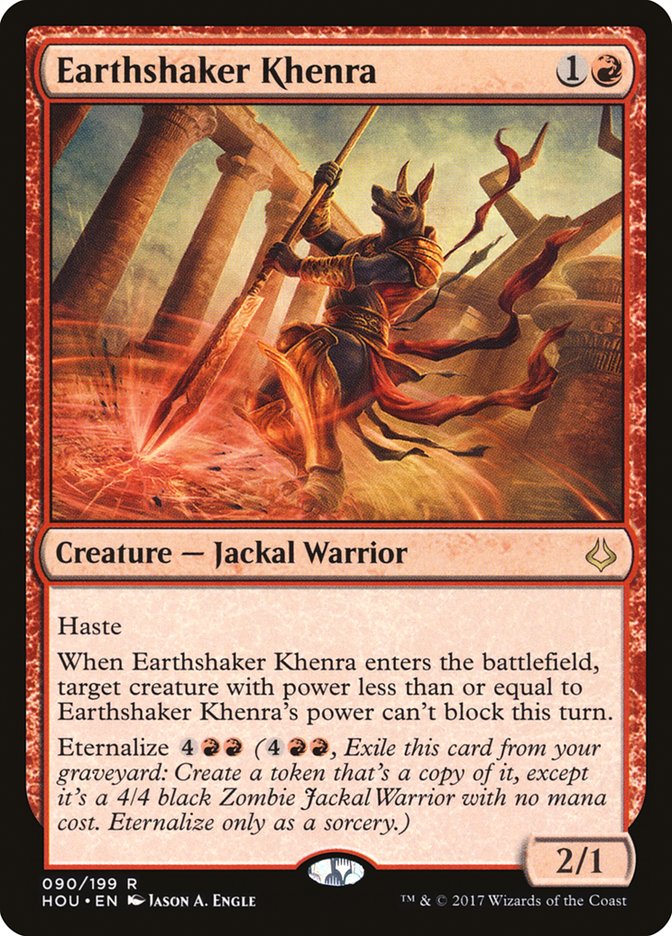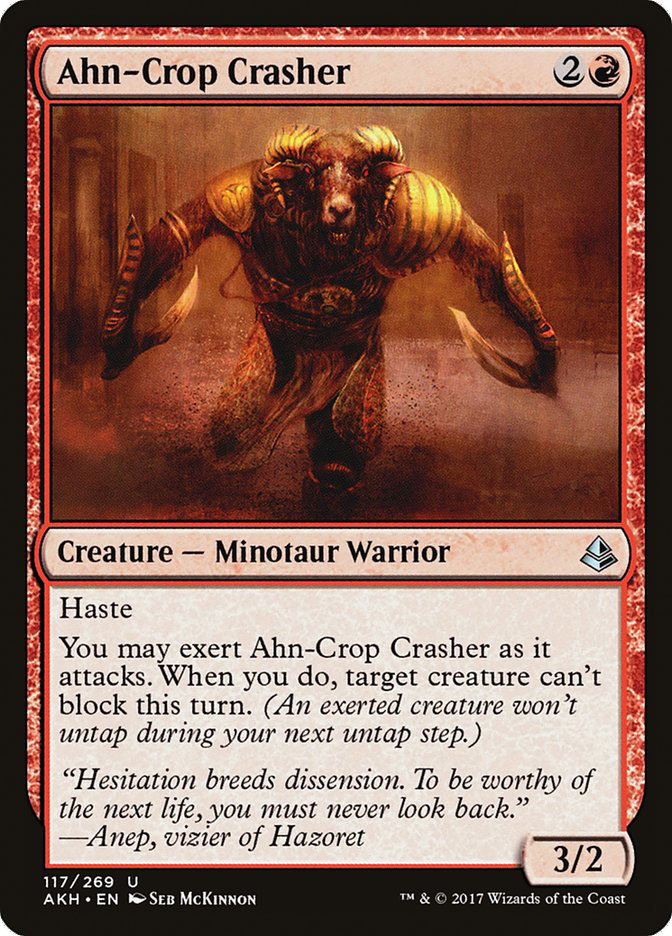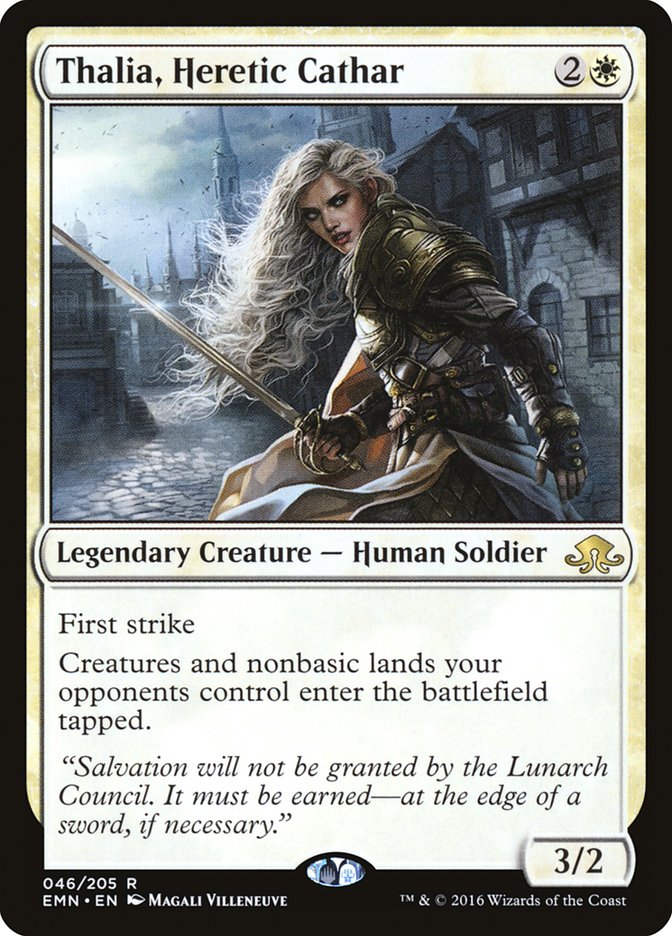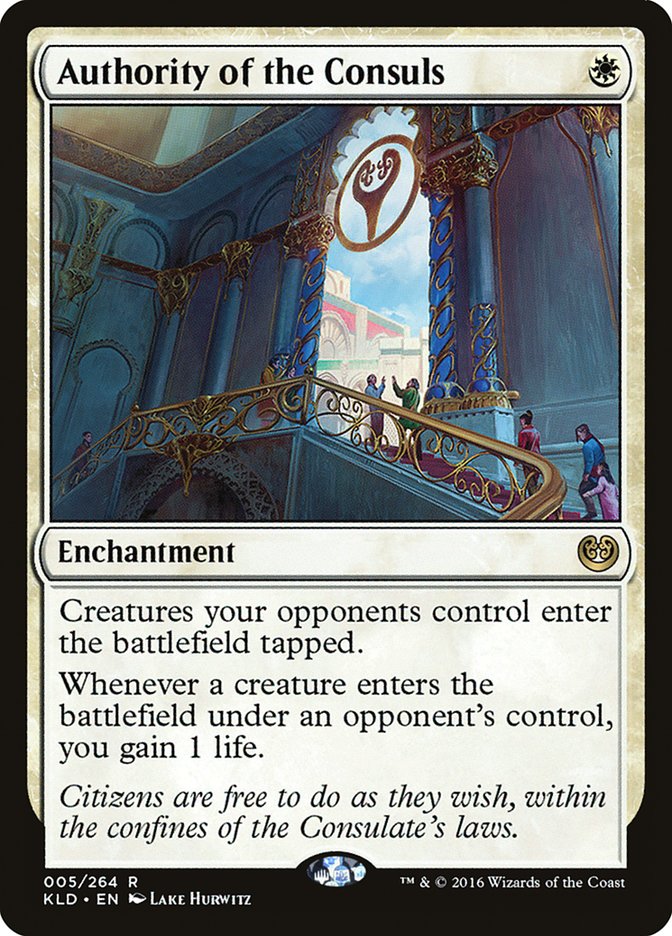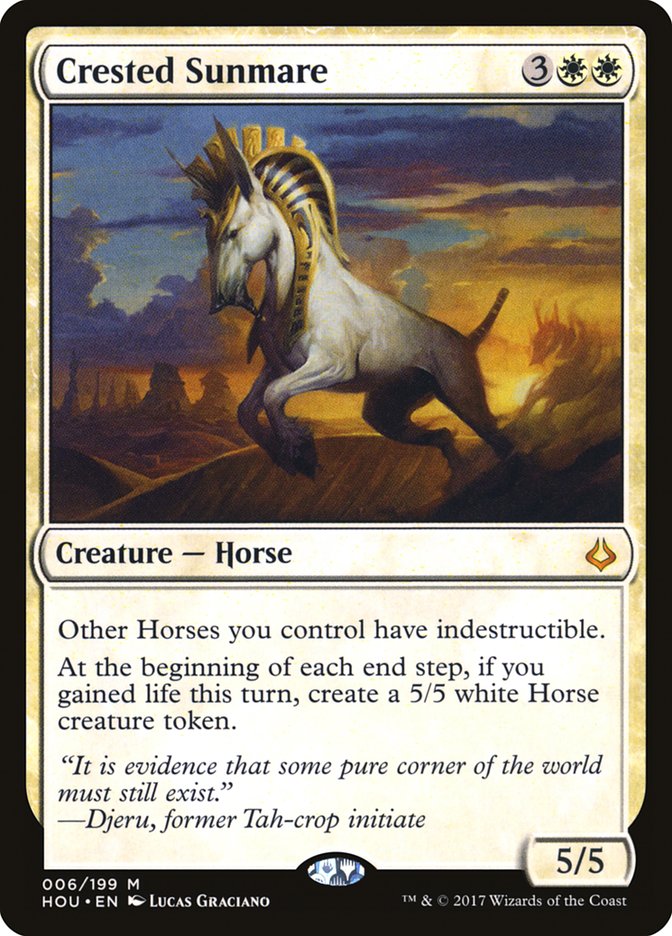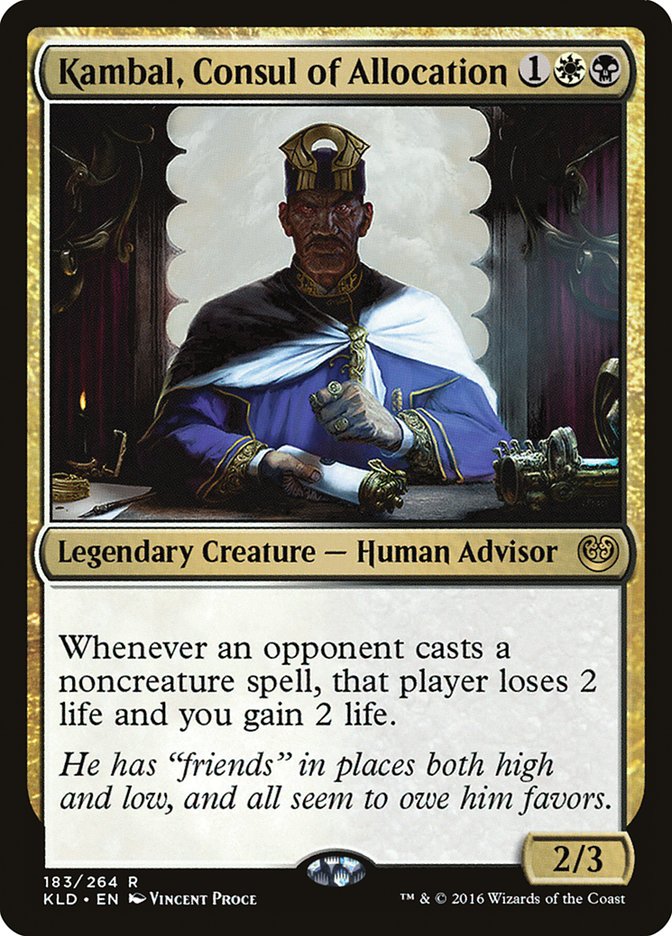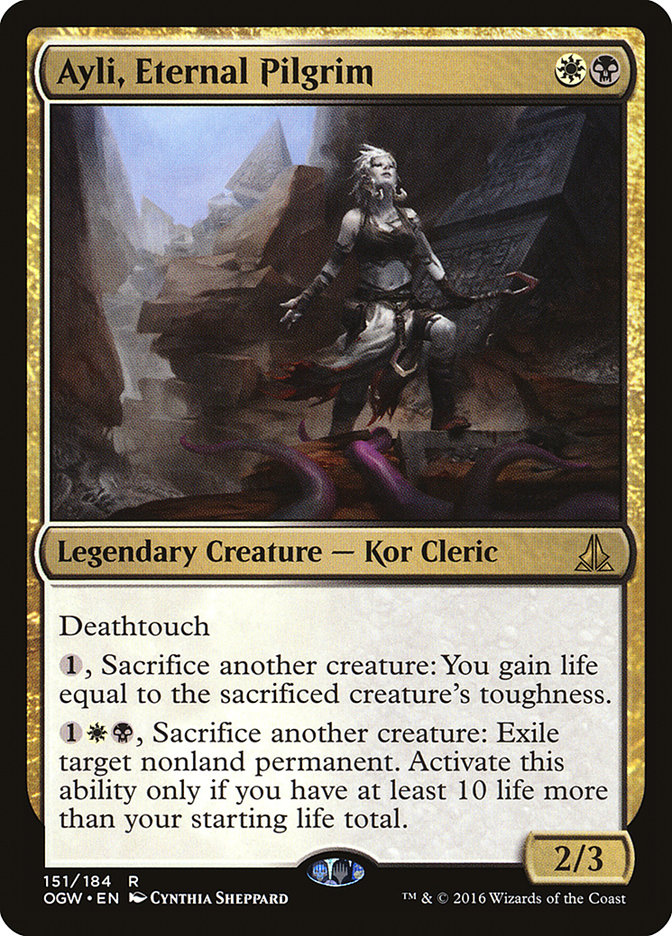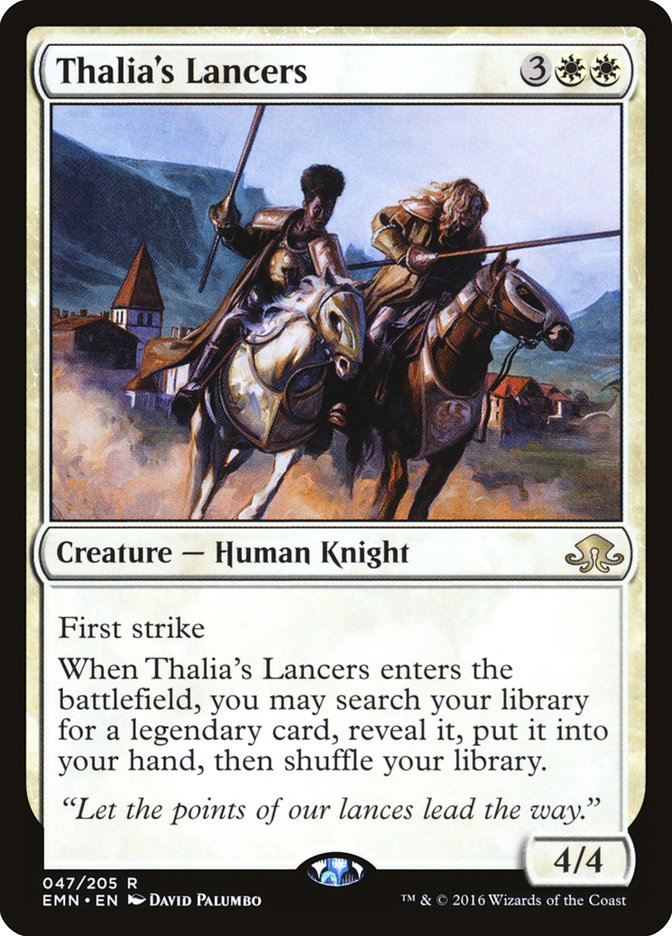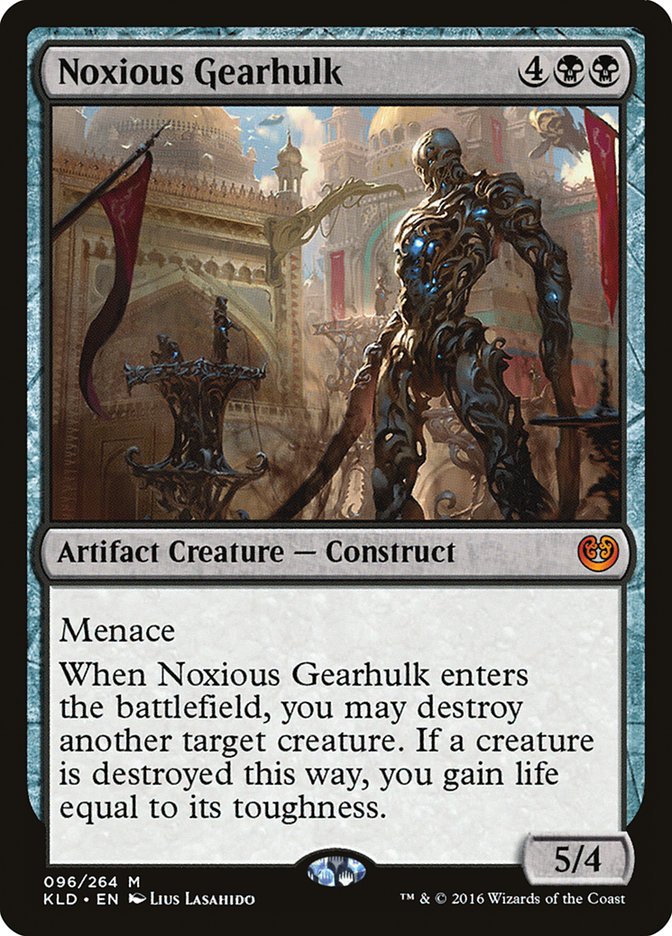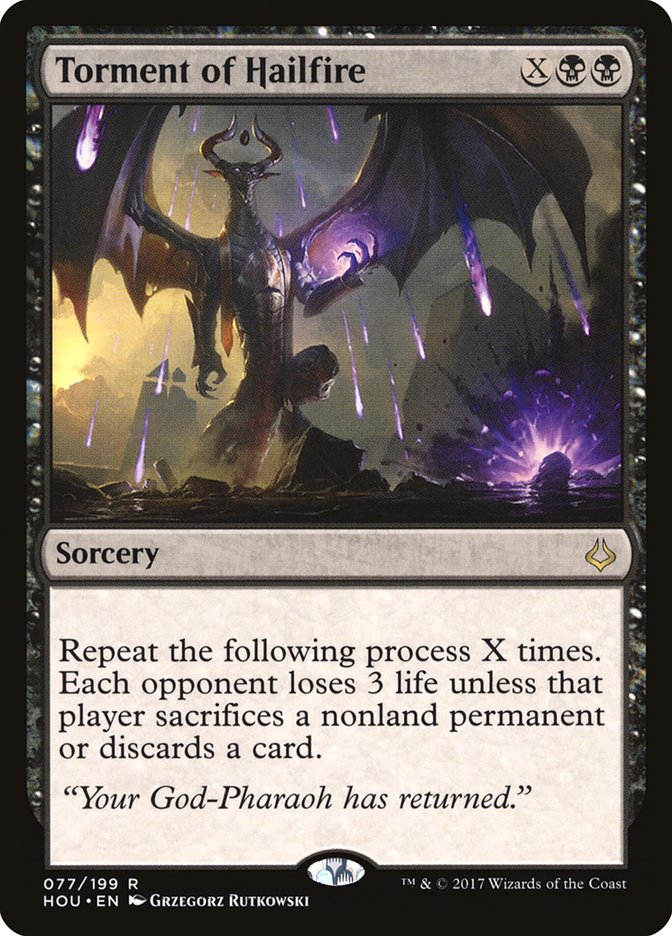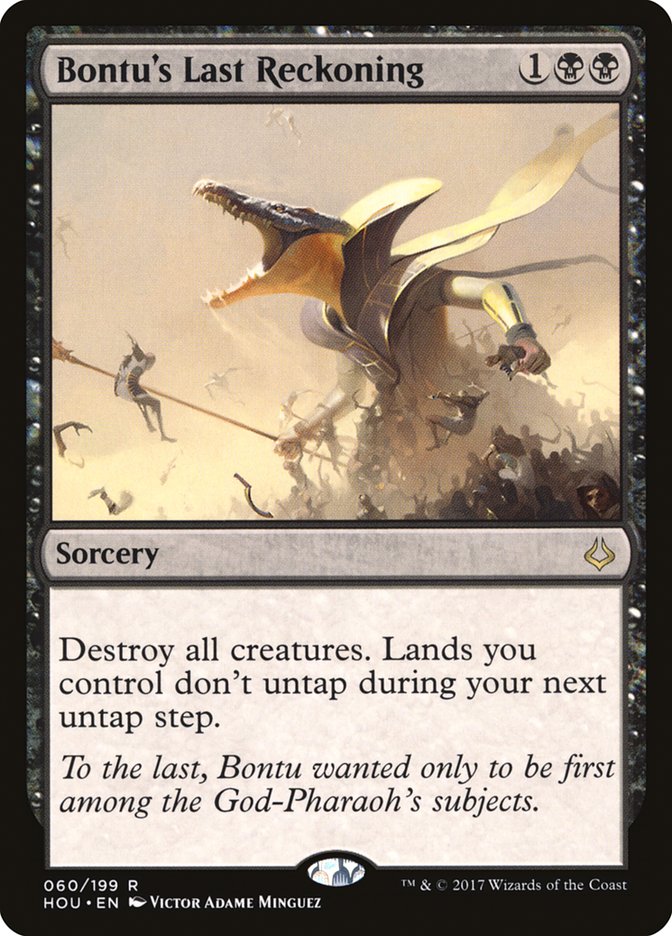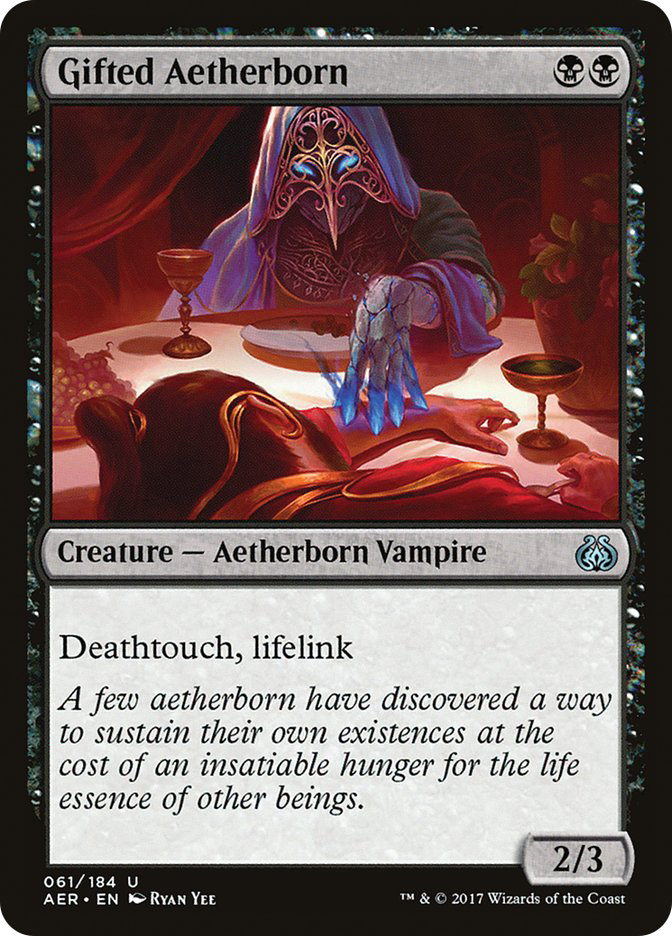After several Standard seasons of dominant decks that stifled all attempts at creativity in the competitive realm, it’s almost a relief to see a Standard format so wide open heading into Pro Tour Hour of Devastation.
At least, that’s how I was hoping to open this article.
Despite the best efforts of people like Team Eureka (Imminent Doom? Really?), we have ourselves a clear “best deck” in Ramunap Red.
Live shot of mono-red players everywhere. Probably.
As loath as I am to have to deal with decks that put me to ten life on turn 4, it is almost a relief to know that beating these decks is at least somewhat straightforward if you choose to do it. I have, of course, a few brews in mind to make the lives of those mean ol’ aggro players as difficult and uncomfortable as possible.
With the way the metagame appears to be shaping up, we should be able to build a deck that beats three of the best decks in the format: Ramunap Red, Black Zombies, and U/W Monument. Ramp and Control decks attack a different axis and might not be vulnerable to the same angle I want to take with this deck, so bear that in mind if your FNM is replete with people playing those strategies.
How Not to Beat Ramunap Red
Traditionally, green-based creature decks have been able to beat red aggro decks by blocking effectively, as their creatures tend to be bigger than red’s at the same spot on the curve. Sylvan Advocate is still around, and it does have friends, but the problem is not the availability of beefy green creatures. You see, you’re never actually blocking.
This also means cards like Moaning Wall, Wall of Forgotten Pharaohs, and Wall of Resurgence are far less effective than they would normally be against red aggressive strategies. Creatures with more than two power do at least avoid the Earthshaker Khenra’s trigger, but that is a one-off and is more intimidating when it gets eternalized anyway.
We’d also expect Flaying Tendrils and the like to do a number on red decks. Although they do have some effectiveness against Ramunap Red, they lose a lot of power due to the sheer number of haste creatures the deck can deploy. Cartouche of Zeal pulls double duty here, nullifying a blocker and giving a new creature haste. The big hitter here is Hazoret the Fervent, not only hitting you hard right after you wipe the battlefield but also being almost impossible to remove for many decks.
So How Do We Win?
Simply put, we win by not losing for as long as possible. Unlike many red decks, Ramunap Red lacks a way to prevent you from gaining life. Although it is more resilient and more able to deal damage consistently than historical red decks that were heavy on burn spells, it is still going to struggle against a strategy that consistently gains life, even in small increments. White and green have our best options for lifegain, but also for gaining life with other effects included.
Although we can’t rely on blocking to keep us alive, lifelink creatures are still immensely valuable. We have to think about how we want to use them, though, and against a deck with as many as sixteen “no blocking for you” effects, you have to use them to race. Black and white are going to offer us the best (okay, the only) options for lifelink.
Slowing down their haste creatures is also crucial. There are a couple of cards that do that in Standard right now, both of which are white:
Conveniently, Authority of the Consuls also gains us life and is useful against the likes of God-Pharaoh’s Gift decks as well. We might be on to something here. I can see potential in a B/W midrange list with everyone’s favorite Horse, Crested Sunmare.
Can I Call it The Black Stallion?
The best thing about building decks this way is that we already have a framework and a gameplan. We know we want to gain life and keep the battlefield as clean as possible, and then cast Crested Sunmare and win the game. We also want to slow down the opponent as much as possible and apply some pressure in the meantime. Sounds pretty demanding, but it should be doable.
There are 33 cards that either have or give lifelink in our colors. Gifted Aetherborn and Aerial Responder both seem to be good options, as they can double as offensive and defensive cards while padding our life total. They will require some manabase flexibility but the power level is worth it.
We’re also going to want some number of Kalitas, Traitor of Ghet in the maindeck as both a powerful stop sign and a solid offensive threat. Keeping it back on defense will often not be worth doing against red, but against most other aggressive decks, it’s a very real roadblock. Finding room for Gisela, the Broken Blade is also important, and if she ever gets to block, the game could well end. Always remember, though, that Gisela does die to almost all their maindeck removal, so holding her until they have drained a lot of those resources might be the better plan. I would also consider Lone Rider for the early threat that can become a game-winner if it ever flips, and Angel of Invention for the Anthem effect and the ability to attack and try to block.
(It’s never blocking.)
I really like the idea of maindeck Authority of the Consuls. Not only does it drastically reduce the power of the top of their deck once they have emptied their hand, the incidental lifegain will make a huge difference. This deck does not have a “hold back threats” mode in Game 1 and has a pretty poor one in sideboarded games. It also cannot remove an enchantment, so that Authority will remain unquestioned all game.
Two escalate cards, Collective Brutality and Blessed Alliance, likely both make the cut. Collective Brutality especially trades for two relevant cards at least, albeit at the cost of one from your hand. Blessed Alliance might be too focused on the red decks, but it’s at least a solid sideboard option. I’m on the fence about including Sunscourge Champion, but I think we’d be crazy not to play it if we also end up running Gideon, Ally of Zendikar.
Kambal. Consul of Allocation is a card I have always wanted to play but just could not fit in anywhere. Most of the time it just eats a removal spell and drains for two, but in this deck, that might well be enough to let us survive a turn. If the spell they cast is Cartouche of Zeal, you negate the bonus damage from the Cartouche and your Kambal gets to do it again when they do draw removal. That’s probably not something we want in multiples, but definitely playable. He will be joined at the three spot by the aforementioned Thalia, Heretic Cathar, who, although she does not gain life, really puts the brakes on any aggressive strategy. If that deck happens to be playing several nonbasic lands, the slowdown is even more pronounced.
If we are looking to make Crested Sunmare a key part of the deck, we want to ensure we can gain life on each turn. One way to do this is to play Ayli, Eternal Pilgrim with token generators to provide a constant stream of sacrifice fodder. We could also look at Pious Evangel and possibly Anointer Priest, both of which have additional upside as Anointer Priest comes back for more and the Evangel transforms to give us reach. One potentially cute trick to try with the Sunmare is to also play Mirage Mirror, which, aside from all the other fun tricks, allows you to copy the Sunmare in response to removal to give them both indestructible.
I am tempted to include some number of Thalia’s Lancers, since we will have a number of legendary permanents that we might want in various situations. We could also put a planeswalker/Oath package in the sideboard, allowing the Lancers to fetch up an Oath as needed. Such a plan would give us more game against decks like U/R Control that really don’t care how much life we gain, but might have a harder time with resolved planeswalkers.
Updating Frog Rock
Something I don’t do enough of is letting you know how certain ideas worked and what changes I would make going forward. I’ve had the chance to test two of my deck ideas so far, and while I think we should shelve the G/W Approach Ramp for now, I am much more excited about the potential of the G/B Frog Rock deck from the same article. Here’s the initial list:
Creatures (16)
- 1 Ulamog, the Ceaseless Hunger
- 3 Tireless Tracker
- 2 The Gitrog Monster
- 2 Ishkanah, Grafwidow
- 4 Grim Flayer
- 1 Verdurous Gearhulk
- 1 Shefet Monitor
- 2 Ramunap Excavator
Planeswalkers (2)
Lands (23)
Spells (19)

As fun as that looked, I realised very quickly that it had approximately no chance to beat Ramunap Red ever. Ulamog, the Ceaseless Hunger and Hour of Promise are all well and good, but they really don’t fit the grindy nature of the deck and are just not what I want to be doing against a deck that never lets you block and will make you dead long before you can make ten mana. I also hate the sideboard, which was geared to beat a ramp menace that never really materialized.
Just looking at the list, I knew I wanted to change at least five cards: the Ulamog and the Hour of Promise. Without the ramp spell, I knew I wanted at least one more land, and as I said last time, I was looking for an excuse to get the Ifnir Deadlands in the maindeck. I also wanted something of a toolbox to fetch up with Traverse the Ulvenwald, so I went to the old trusty notebook to see what I liked in B/G Delirium decks.
Noxious Gearhulk was an easy addition as a catch-all removal spell for which I could tutor. I also liked the idea of adding a Greenwarden of Murasa, mainly because that card has been criminally and woefully underplayed for the entirety of its time in Standard.
That left me two slots. With the two cards already added being six-drops, I figured a 25th land made sense. That led me to the second Ifnir Deadlands, which got the nod over Drownyard Temple because of the ability to shrink and ultimately kill a Hazoret, the Fervent. The final slot was a toss-up. I considered Archfiend of Ifnir, but with precious little cycling and zero discard outlets in the deck, it did not seem worth the investment. Ultimately I settled on a World Breaker, mainly because I like the utility and I was happy to have something at the top-end to pay off all the lands I was hoping to draw.
That left me with the sideboard. Noxious Gearhulk made the move to the maindeck, as did the Ifnir Deadlands, so they would need to be replaced. Lost Legacy is a lot worse when I don’t have to worry about Ulamog, the Ceaseless Hunger from every second deck, and Natural Obsolescence is just a hedge against a bunch of different cards that may never show up. I was expecting a field full of aggro, so out they came. Seven total cards to change sounds like a lot, but I had plans for some of those slots.
I briefly considered Torment of Hailfire as a way to punish control decks. I say “briefly” because this idea is terrible. Torment is great against decks like B/G Delirium or R/B Midrange that want to out-value you but have no way to interact with a spell on the stack. Where it is far less good is against any deck that can look at the eight mana you just tapped to cast one spell, laugh, tap two mana, and Negate you back to the Stone Age. Instead I decided to attack them from a different angle, hoping the planeswalkers and Transgress the Mind I would be bringing in would team up with the two Liliana’s Defeat I added to the deck (for Nicol Bolas, God-Pharaoh) to be able to disrupt their plan long enough to land a solid threat.
That just left the aggro matchup to shore up. I have been itching to try Bontu’s Last Reckoning as a sweeper, which could replace the Never in the maindeck against aggressive decks. Gifted Aetherborn is so close to Vampire Nighthawk that I will always try to find a home for it, and it works well here. I have often said that Vampire Nighthawk enabled me to play more terrible brews than any other card because of the work it puts in, and hopefully a pair of its non-flying cousin will carry some portion of that load.
That left me with two more slots. As I was thumbing through the notebook, I came across a note I had written about Ishkanah, Grafwidow and how I wished we had Deadly Recluse in Standard right now. That twigged my memory and I went to the Hour of Devastation notes I made…and there it was. Obelisk Spider. Four toughness puts it out of range of most of red’s removal, the life drain is potentially relevant, and the ability to put counters on things will help shrink Hazoret and potentially gain us a lot of life if we can activate Ifnir Deadlands. The occasionally relevant extra points of life loss when we activate Ishkanah are just the delicious, coffee-infused icing on the chocolate cake we have baked here.
On the night I only lost to a Ramunap Red draw that included something like seven burn spells in two games and a Kari Zev’s Expertise in Game 2 to steal my Kalitas, Traitor of Ghet. Both games, I had the game sewn up one turn after he killed me, once with a Yahenni’s Expertise on top of my deck to wipe his team and cast a free Tireless Tracker, and once with a Verdurous Gearhulk to make my Kalitas huge/huge and gain me approximately infinity life. I don’t feel like the matchup is unwinnable in normal circumstances.
Every other matchup felt great: B/G Constrictor, Mardu Vehicles, R/B Aggro and U/B Mill. The engine of The Gitrog Monster and Ramunap Excavator is so, so good that I think you have to try very hard to lose once it is assembled. Going forward, I think I want to try at least one Banewhip Punisher in the maindeck, as that ability is just what I want to be doing. I’m also a big fan of Hour of Glory somewhere in the 75. Here’s what I would play next week:
Creatures (18)
- 1 Greenwarden of Murasa
- 3 Tireless Tracker
- 2 The Gitrog Monster
- 2 Ishkanah, Grafwidow
- 4 Grim Flayer
- 1 Verdurous Gearhulk
- 1 Noxious Gearhulk
- 1 Shefet Monitor
- 2 Ramunap Excavator
- 1 Banewhip Punisher
Planeswalkers (2)
Lands (25)
Spells (15)

That’s all we have for this week, folks. As always, thanks for stopping by the LAB, where Lansdell’s Always Brewing. Next week, we will take a look at what I am tinkering with in Modern right now. Until next time…Brew On!




